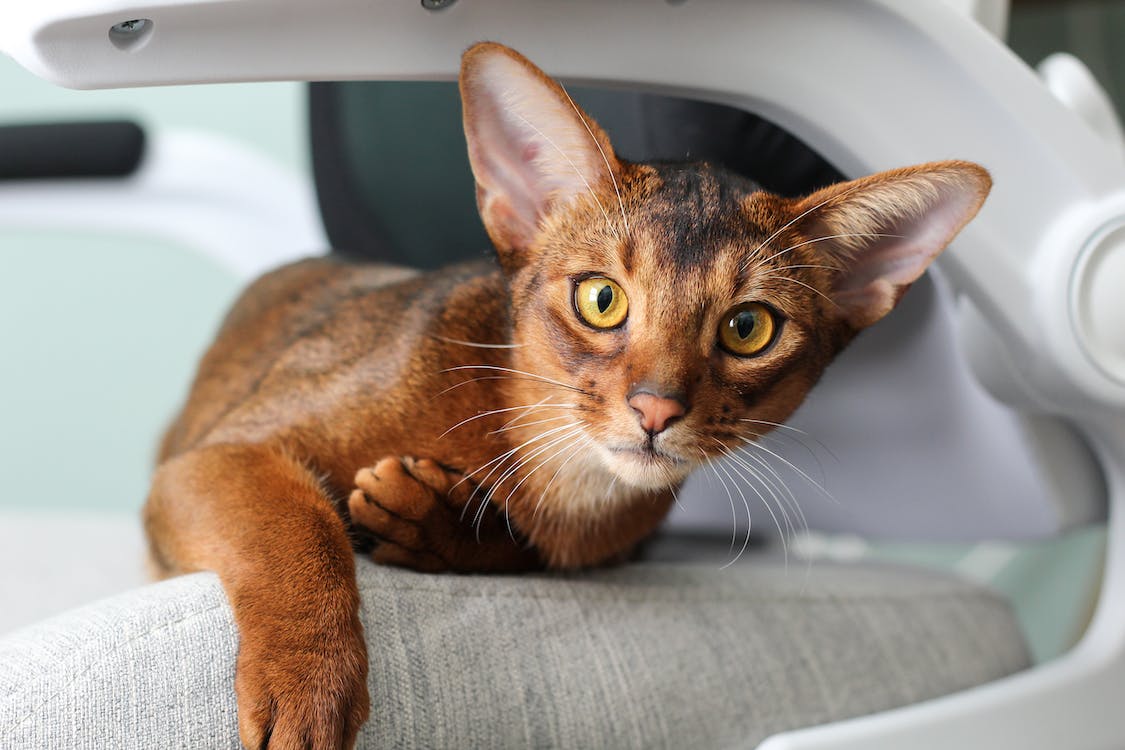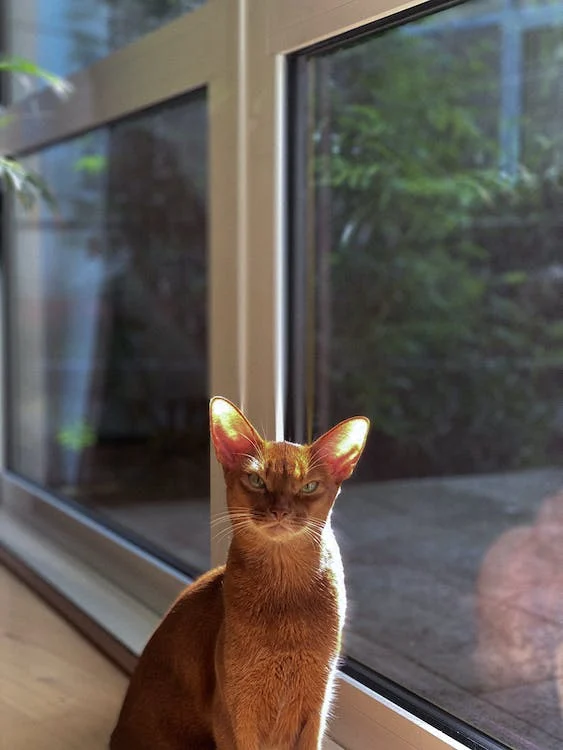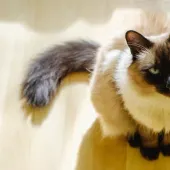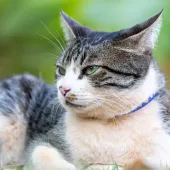The Allure of Abyssinian Cats: A Marvel in Feline Elegance

In the diverse world of feline breeds, the Abyssinian cat stands out as a true marvel of nature. With its ancient lineage, distinctive appearance, and playful personality, the Abyssinian cat has captured the hearts of cat lovers around the globe. Let’s delve into the enchanting world of Abyssinians and discover what makes them so special.
Background and History
The enigma surrounding the Abyssinian's origins persists. Nonetheless, there is proof that cats were worshipped by the ancient Egyptians: sculptures and murals dating back up to 4,000 years show a striking resemblance to modern Abyssinian art.
Additionally, new genetic study suggests that the breed from which the modern Abyssinian may have descended may have originated in Southeast Asia and around the Indian Ocean coast. Some claim the Abyssinian has resemblance to the African wildcat, the progenitor of all domestic cats. Many breeders attribute the breed's revival to British breeders, believing that the original Abyssinian line has vanished.
The Scottish-born Dr. William Gordon Stables' 1876 book, Cats: Their Points and Characteristics, With Curiosities of Cat Life, and a Chapter on Feline Ailments, included a description and physical details of Zula, the first Abyssinian ever recorded (London: Dean & Smith). Zula (called for the Abyssinian town the expedition party constructed port at) accompanied the expedition headed by Lt. Gen. Sir Robert Napier and his crew as they sailed from Abyssinia to England when the British-led Abyssinian war of 1868 came to an end.
Even while the British surely contributed significantly to the development of the modern Abyssinian, the destruction caused by World War II destroyed their work, forcing them to start again. It may be inferred that while many of the basic attributes of the Abyssinian have been altered over time, the breed still commands the same respect and adoration as it did in ancient Egypt.
The United States did not recognize the Abyssinian people until the 20th century. Initially showcased in Boston, Massachusetts in 1909, the breed didn't start exhibiting prosperity until the 1930s. Several of the children passed away at a young age, so even then the success was limited. However, Ras Seyum, an Abyssinian with a red coat, was brought to the United States from Britain in 1938. The Abyssinian cat attracted the interest of feline lovers, and its popularity resulted in additional breed imports from Britain, which ultimately contributed to the breed's current prosperity.

Distinctive Appearance
Abyssinians are known for their striking appearance. They have a medium-sized, muscular body with a graceful and elegant posture. Their coat is short, ticked with agouti (each hair is banded with multiple colors), creating a warm and glowing effect. The coat's rich, golden tones give them a wild appearance, reminiscent of the cats seen in ancient Egyptian art. Their almond-shaped eyes are usually green or gold, adding to their captivating gaze.
Playful and Curious Personalities
Beyond their aesthetic appeal, Abyssinians are renowned for their playful and curious nature. They are highly intelligent cats, constantly exploring their surroundings and engaging in interactive play. Abyssinians are social creatures that enjoy the company of their human family members and other pets. They are affectionate and often form strong bonds with their owners, making them delightful companions.
Low Maintenance, High Affection
One of the advantages of having an Abyssinian cat is their low-maintenance coat. Unlike some other long-haired breeds, Abyssinians do not require extensive grooming. Their short coat only needs occasional brushing to keep it in good condition. However, they do require mental and physical stimulation due to their active nature. Interactive toys and engaging activities help keep their curious minds satisfied.
Abyssinians in Popular Culture
Abyssinian cats have made appearances in various forms of media over the years. They have been featured in movies, advertisements, and even as characters in popular books. Their exotic appearance often makes them a top choice for cat-related roles, further adding to their mystique and popularity.

Care and Health
The Abyssinian is a ball of energy that chafes at limitations and plays a lot to get its much-needed exercise. This cat is always looking for human contact, and it forms strong bonds with its owner through snuggling and grooming.
Despite their general good health, Abyssinians are prone to dental decay and gingivitis. For this reason, receiving the right dental care is crucial to their health. Additionally few conditions which is believed to be inherited, might affect Abyssinians.
- Progressive retinal atrophy is the term used to describe a class of hereditary conditions that cause diminished or total blindness.
- A kneecap dislocation known as a patellar luxation can cause mild to severe lameness. This condition may need to be corrected surgically.
- Renal amyloidosis is a hereditary condition where deposits of the protein amyloid accumulate in the kidneys and other organs, potentially resulting in renal failure.
- Osteoarthritis: A debilitating joint ailment that is prevalent in cats of all ages. The inability to run, leap, or climb stairs; low energy; heightened irritation; or if your cat quits using the litter box are all indicators of osteoarthritis.
- Kidney disease: Another prevalent ailment in older cats is kidney disease, which manifests as increased thirst, dull or thinning hair, energy loss, vomiting, and frequent urination.
The Abyssinian cat breed embodies elegance, intelligence, and playfulness, making it a favorite among cat enthusiasts. Whether it's their ancient allure, distinctive coat, or lively personality, Abyssinians continue to captivate people around the world. For those seeking a feline companion that combines beauty with brains, the Abyssinian cat stands as a true testament to the wonders of nature, adding a touch of wild elegance to any home.
Interesting Facts
- The Abyssinian's DNA was decoded in 2007. This decoding sheds light on certain feline illnesses and has aided in our understanding of species domestication.
- The title cat in Disney's 1978 picture The Cat From Outer Space was named An Aby.
- The Abyssinian was instrumental in creating Australia's first registered cat breed, the Australian Mist, a Burmese/Aby hybrid.
- The Abyssinian Cats Are Natural Explorers
These kitties will never stop moving, investigating every tiny motion, confined area, and elevated walkway. They're not going to skip a beat. - The Long-Haired Variant of Abyssinian cat: the Somali
Similar in structure to the Abyssinian, the stunning Somali has fur that varies in length from medium to long. - "The Cat of the Blue Nile" is the nickname they go by.
There is a common misconception that the ancient Egyptians revered the Abyssinian breed as gods.





